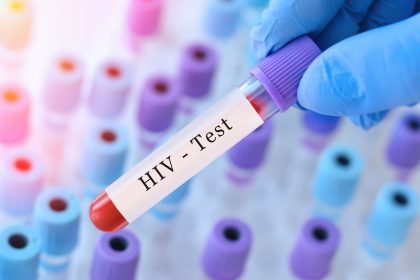The idea that sexually transmitted diseases (STDs) always announce themselves with uncomfortable or visible symptoms is a dangerous misconception that health experts are working to correct. Research shows that millions of Americans currently have STDs without experiencing any noticeable symptoms, creating a silent epidemic that contributes to the rising rates of infections nationwide.
The invisible threat explained
Many people assume they would know if they contracted an STD through obvious signs like unusual discharge, genital sores, or painful urination. The reality, however, is far more complicated. According to the Centers for Disease Control and Prevention (CDC), several of the most common STDs can remain completely asymptomatic in a significant percentage of cases.
Asymptomatic infections are actually incredibly common, which explains why regular testing is so important regardless of symptom presence. The widespread belief that no symptoms means no infection creates a dangerous situation where individuals may unknowingly transmit infections to partners while also delaying their own treatment, potentially leading to serious long-term health consequences.
Common STDs that frequently show no symptoms
Research indicates that several widespread STDs are notorious for their ability to remain silent within the body:
- Chlamydia – Often called a “silent infection,” the CDC estimates that about 75% of women and 50% of men with chlamydia experience no symptoms. Despite this lack of warning signs, untreated chlamydia can cause pelvic inflammatory disease and fertility issues in women.
- Gonorrhea – Similar to chlamydia, gonorrhea frequently causes no symptoms, particularly in women. Approximately 50% of women and 10% of men with gonorrhea may never develop noticeable signs of infection.
- Human Papillomavirus (HPV) – The most common sexually transmitted infection in the United States, HPV typically produces no symptoms. Most people never know they have it, yet certain strains can lead to genital warts or various cancers, including cervical cancer.
- Herpes (HSV-1 and HSV-2) – Many people with herpes never develop the characteristic sores or blisters. Studies indicate that up to 87% of those with HSV-2 (genital herpes) have never received a diagnosis because they don’t experience recognizable symptoms.
- HIV – In its early stages, HIV may cause flu-like symptoms that are easily dismissed, but many individuals experience no symptoms at all for years while the virus damages their immune system.
- Syphilis – While syphilis typically progresses through distinct stages with various symptoms, including a painless sore called a chancre, these signs can be easily overlooked or may appear in locations not readily visible.
- Trichomoniasis – This common parasitic infection causes symptoms in only about 30% of infected individuals, yet can increase the risk of contracting other STDs and cause complications during pregnancy.
Why asymptomatic infections matter
The lack of symptoms creates multiple public health challenges. First, without obvious signs prompting medical attention, infected individuals often don’t seek testing or treatment. Second, they may unknowingly pass infections to sexual partners, contributing to community spread.
From a public health perspective, asymptomatic STDs are particularly concerning because they create a reservoir of infection in the population. When people don’t know they’re infected, they don’t get treated, and the cycle of transmission continues uninterrupted.
Even without symptoms, untreated STDs can lead to serious health complications: Pelvic inflammatory disease, which can cause chronic pain and infertility; Increased risk of ectopic pregnancy; Increased vulnerability to HIV infection; Transmission to infants during pregnancy or childbirth; Certain cancers, including cervical, anal, and throat cancers linked to HPV; Neurological and cardiovascular damage from late-stage syphilis and; Epididymitis in men, which can affect fertility
The absence of symptoms doesn’t mean absence of harm. These infections can silently damage reproductive organs or increase cancer risks over time, making detection through testing crucial regardless of how a person feels.
Testing recommendations from health experts
Given the prevalence of asymptomatic infections, health authorities have established clear screening guidelines. The CDC recommends: annual chlamydia and gonorrhea screening for all sexually active women under 25; annual screening for older women with new or multiple partners; HIV testing at least once for everyone between 13 and 64; more frequent HIV testing for those with higher risk factors; Syphilis, HIV, hepatitis B, and chlamydia screening for all pregnant women; regular STD screening for men who have sex with men, with frequency based on risk factors and; testing based on risk factors for heterosexual men
Regular testing is essentially the only reliable way to know your status, and health professionals recommend incorporating STD screening into routine healthcare, similar to blood pressure checks or cholesterol tests.
Barriers to testing and diagnosis
Despite clear guidelines, several obstacles prevent people from getting tested regularly:
Access to healthcare remains a significant barrier for many Americans. Those without insurance may avoid seeking STD testing due to cost concerns. Additionally, many rural areas have limited testing facilities, requiring significant travel for residents to access these services.
Social stigma continues to discourage open discussions about sexual health and testing. Many people feel embarrassed or ashamed to request STD tests, even from their regular healthcare providers.
The stigma surrounding STDs remains one of the biggest challenges in public health. Many individuals would rather not know their status than face potential judgment from healthcare providers or partners.
Lack of awareness about the asymptomatic nature of many STDs also contributes to the problem. Many individuals simply don’t realize they should be tested regularly even when feeling completely healthy.
Prevention strategies beyond symptoms
Healthcare professionals emphasize that preventing STD transmission requires more than just watching for symptoms. Effective prevention includes:
Consistent and correct condom use provides significant protection against most STDs, though it’s important to note that some infections, particularly herpes and HPV, can be transmitted through skin-to-skin contact not covered by condoms.
Open communication with partners about sexual health status and testing history helps ensure informed consent and promotes mutual protection. This includes discussing when each partner was last tested and what infections they were tested for.
Pre-exposure prophylaxis (PrEP) has proven highly effective at preventing HIV transmission and is recommended for individuals at high risk of HIV exposure.
Vaccination against preventable STDs, including HPV and hepatitis B, provides long-term protection. The HPV vaccine, in particular, has demonstrated impressive effectiveness in reducing infection rates and precancerous lesions.
The role of technology in increasing testing
Innovative approaches are emerging to address barriers to testing:
Home testing kits have revolutionized access to STD screening. These kits allow individuals to collect samples privately at home and mail them to laboratories for testing, receiving results digitally. This approach eliminates many of the traditional barriers related to stigma and access.
Telehealth services provide convenient consultations with healthcare providers who can order appropriate tests and discuss results remotely. This has proven particularly valuable for those in rural areas with limited local healthcare options.
Anonymous notification tools enable individuals diagnosed with STDs to notify partners through text messages or emails without revealing their identity. These digital systems help break chains of transmission by encouraging exposed individuals to seek testing.
Technology is playing a crucial role in modernizing approaches to STD prevention. Digital tools are making testing more accessible and helping to normalize sexual health as part of overall wellness.
Changing the cultural conversation
Medical professionals agree that addressing the challenge of asymptomatic STDs requires a broader cultural shift in how we approach sexual health.
Healthcare professionals emphasize the need to normalize STD testing as routine healthcare. Getting tested isn’t an admission of risky behavior—it’s a responsible health decision like getting your blood pressure checked.
Educational initiatives targeting high schools and colleges aim to instill testing habits early. By presenting STD screening as a normal part of healthcare for sexually active individuals, these programs hope to reduce stigma and increase testing rates among young adults.
Healthcare providers are also working to create more welcoming environments for discussing sexual health. This includes training medical professionals to initiate conversations about sexual health and testing in non-judgmental ways.
The way healthcare providers approach these conversations can make an enormous difference. Simply asking “When was your last STD test?” rather than “Do you think you need an STD test?” frames testing as an expected part of care rather than something unusual or shameful.
The impact of delayed diagnosis
When asymptomatic infections go undetected, the consequences can be severe both for individuals and public health.
For women, undiagnosed chlamydia and gonorrhea can silently progress to pelvic inflammatory disease, potentially causing permanent damage to reproductive organs. An estimated 10-15% of women with untreated chlamydia develop PID, and up to 15% of those women experience fertility problems as a result.
For men, untreated infections can lead to epididymitis, prostatitis, and in some cases, reduced fertility. While these complications are less common than the reproductive consequences for women, they can still have significant impacts on health and quality of life.
From a public health perspective, undiagnosed cases fuel community transmission rates and contribute to antibiotic resistance, particularly in gonorrhea. The CDC has identified drug-resistant gonorrhea as an urgent public health threat, with some strains showing resistance to multiple classes of antibiotics.
Special considerations for specific populations
Certain groups face unique challenges related to asymptomatic STDs:
Women often bear a disproportionate burden of health consequences from asymptomatic infections. The anatomical structure of female reproductive organs makes it easier for infections to progress unnoticed while causing damage. Additionally, hormonal changes during pregnancy can mask some STD symptoms, making regular prenatal screening crucial.
Men who have sex with men (MSM) face higher rates of certain STDs, including syphilis and gonorrhea. Healthcare providers recommend more frequent testing for this population, including extragenital testing of the throat and rectum, where infections may present no symptoms but can still be transmitted.
Young adults aged 15-24 account for nearly half of all new STD cases despite representing just 25% of the sexually active population. This age group often has limited access to healthcare, less experience navigating medical systems, and greater concerns about confidentiality.
Rural populations face significant barriers to testing, including limited healthcare facilities, fewer specialists, and concerns about privacy in small communities where patients may know healthcare staff personally.
The way forward
Addressing the challenge of asymptomatic STDs requires a comprehensive approach combining policy changes, education, and healthcare innovation.
Expanded insurance coverage for STD testing without copays would remove financial barriers that prevent many people from seeking regular screening. Policy advocates note that the cost of prevention through testing is far lower than treating the complications of advanced infections.
Integration of STD screening into primary care visits could normalize testing and increase detection rates. By presenting STD tests as routine parts of healthcare, providers can reduce stigma and increase acceptance.
Public awareness campaigns highlighting the asymptomatic nature of many STDs could correct dangerous misconceptions. These educational efforts are particularly important for young adults who may be less familiar with sexual health information.
Health experts emphasize the need to change the narrative from “get tested if you notice something wrong” to “get tested regularly because you might not notice anything wrong.” That simple shift in messaging could significantly impact testing rates.
The personal responsibility element
While healthcare systems and public health initiatives play crucial roles in addressing asymptomatic STDs, individuals also bear responsibility for their sexual health.
Taking ownership of your sexual health means getting tested regularly, regardless of symptoms. It means having potentially uncomfortable conversations with partners about testing history and status. And it means using protection consistently, not just when you think there might be a risk.
Healthcare providers emphasize that these practices should be viewed not as exceptional behaviors but as basic aspects of responsible adult life—comparable to regular dental checkups or vehicle maintenance.
For those who test positive, prompt treatment and partner notification are essential steps to prevent further transmission and complications. Many public health departments offer assistance with anonymous partner notification for those uncomfortable having these conversations directly.
Conclusion
The silent nature of many STD infections presents a significant public health challenge, but increased awareness, regular testing, and reduced stigma can help address this hidden epidemic. By understanding that symptoms are an unreliable indicator of STD status, individuals can make more informed decisions about testing and treatment.
The most important message from health experts is that feeling fine doesn’t mean you are fine when it comes to STDs. Regular testing is the only way to know your status and protect both your health and the health of your partners.
As testing becomes more accessible through home kits and telehealth, and as cultural attitudes continue to evolve toward greater openness about sexual health, health experts remain hopeful that the tide can turn against asymptomatic infections—but this depends on individuals recognizing that when it comes to STDs, what you can’t see can indeed hurt you.














